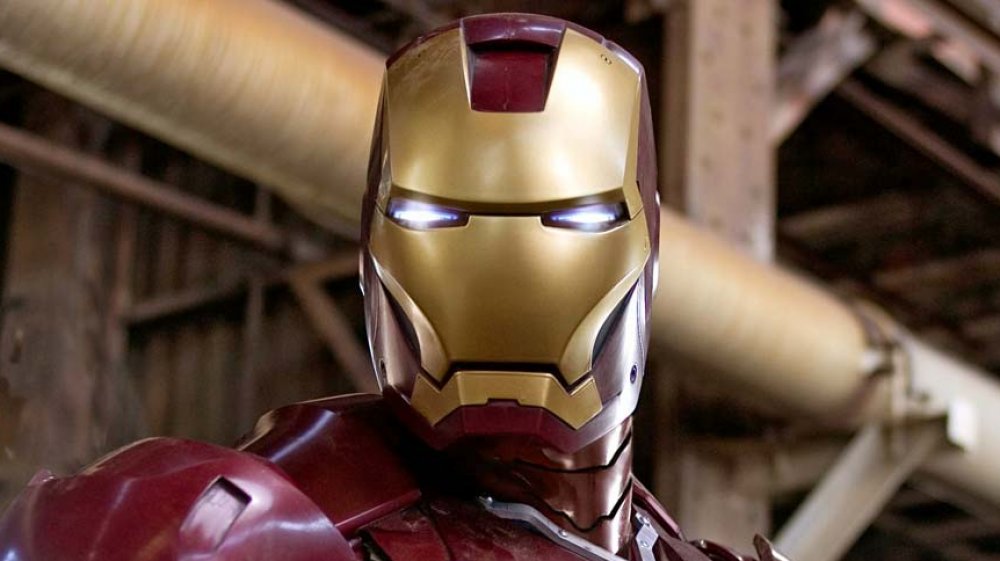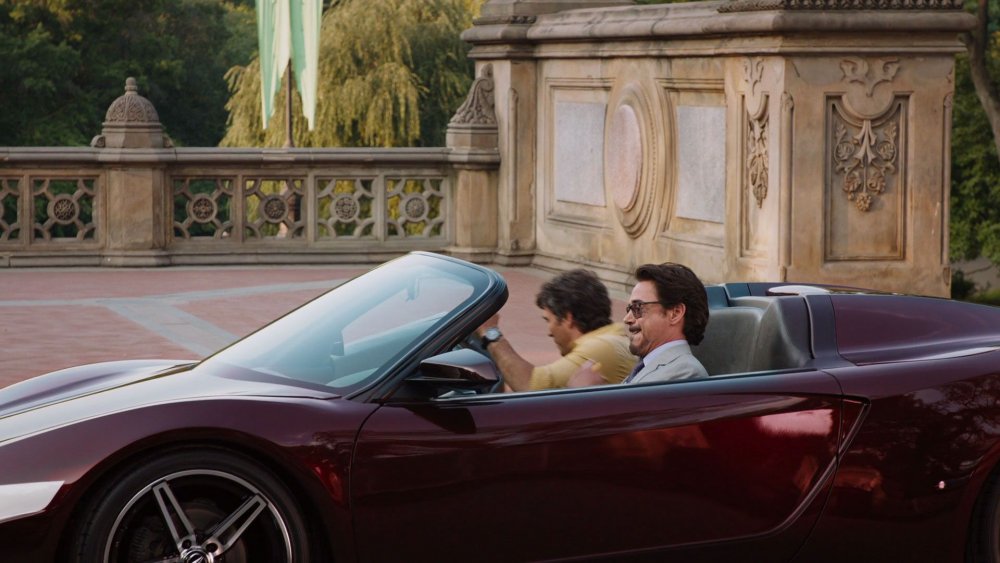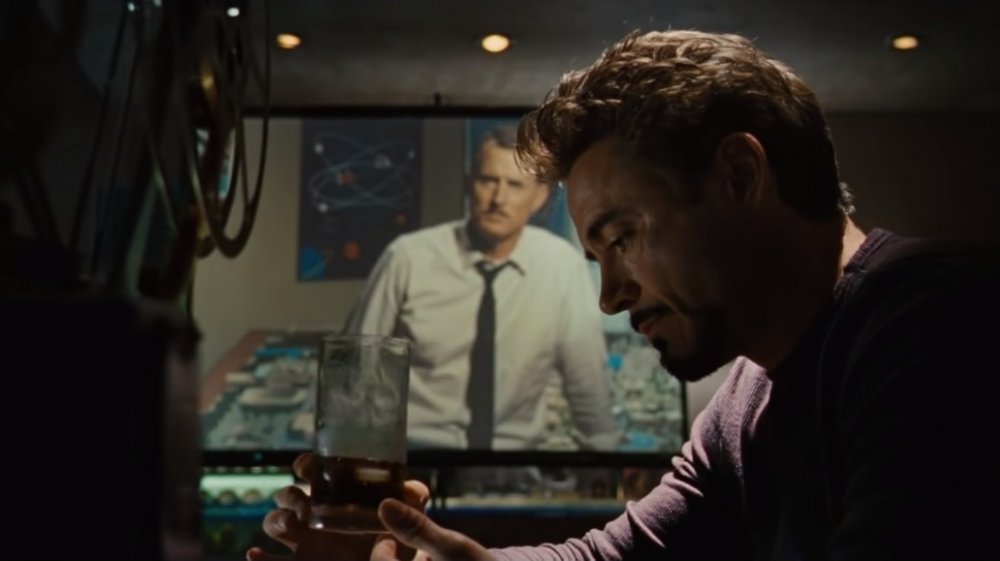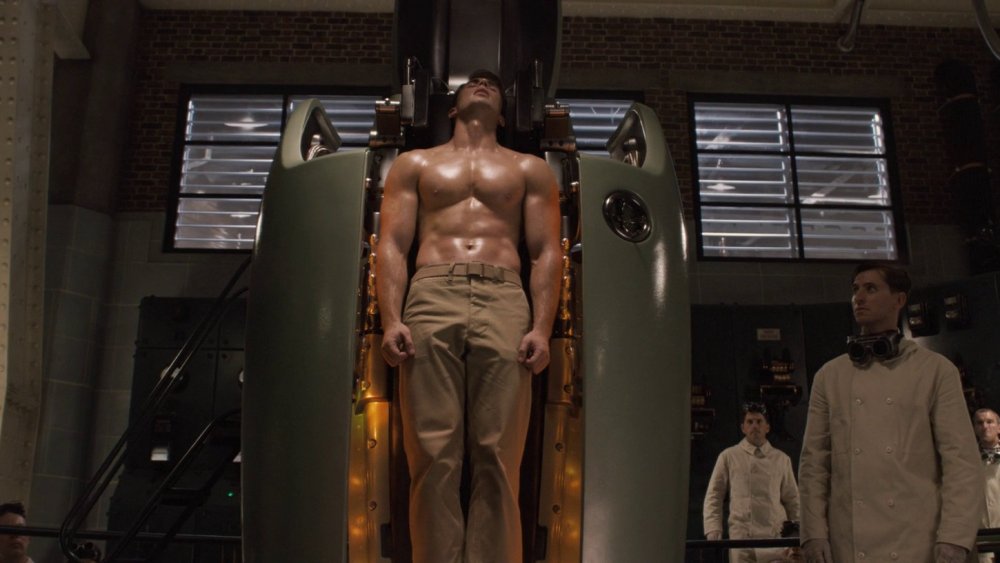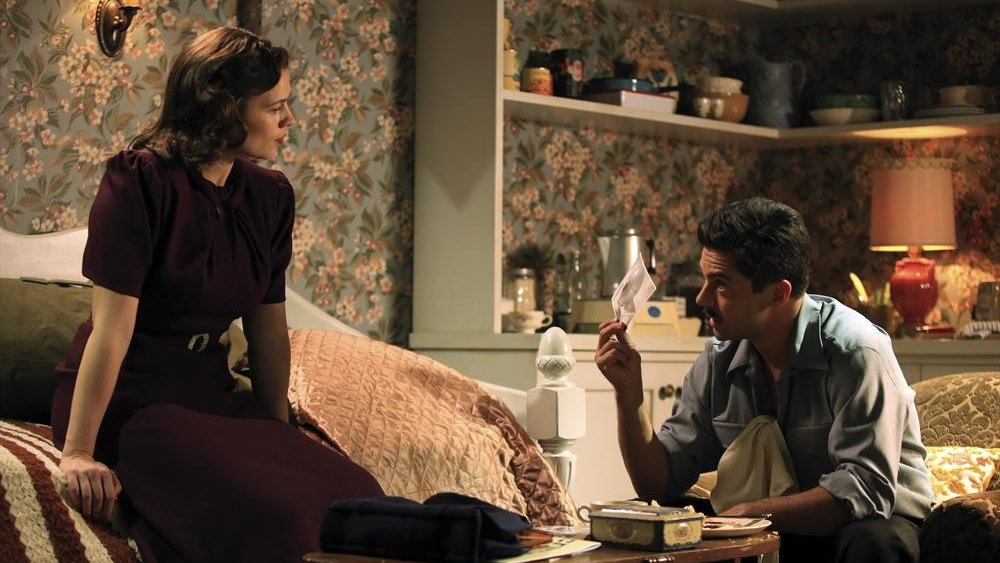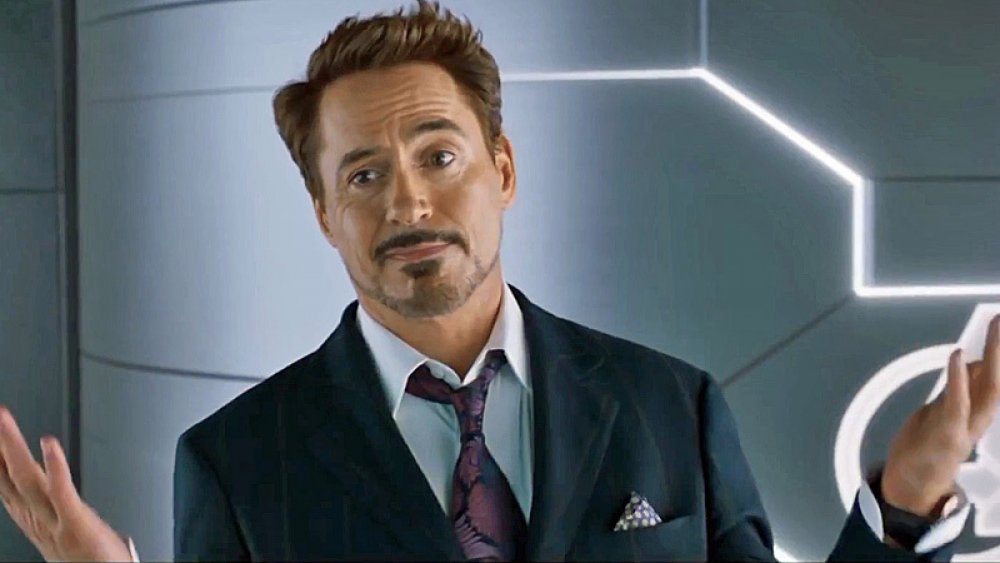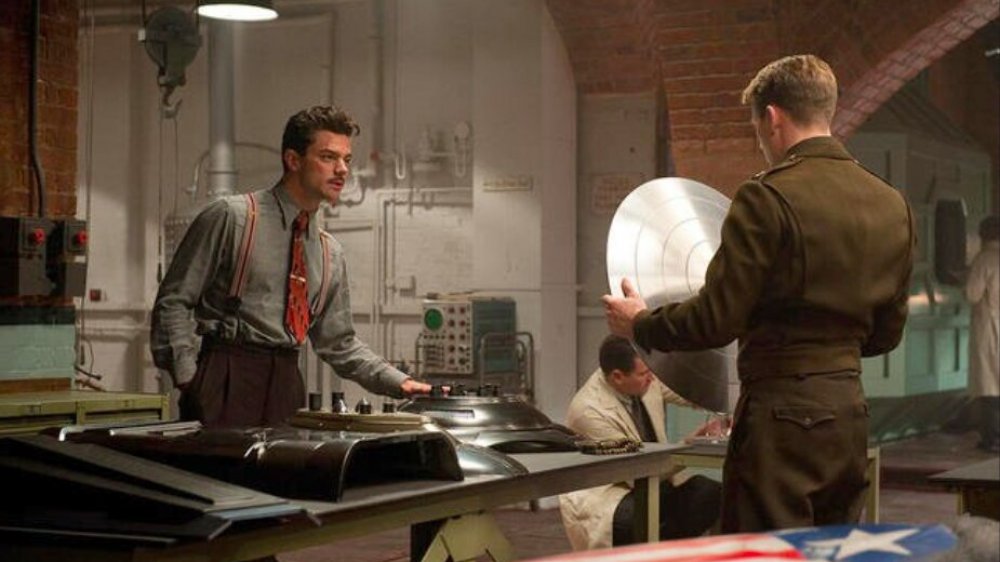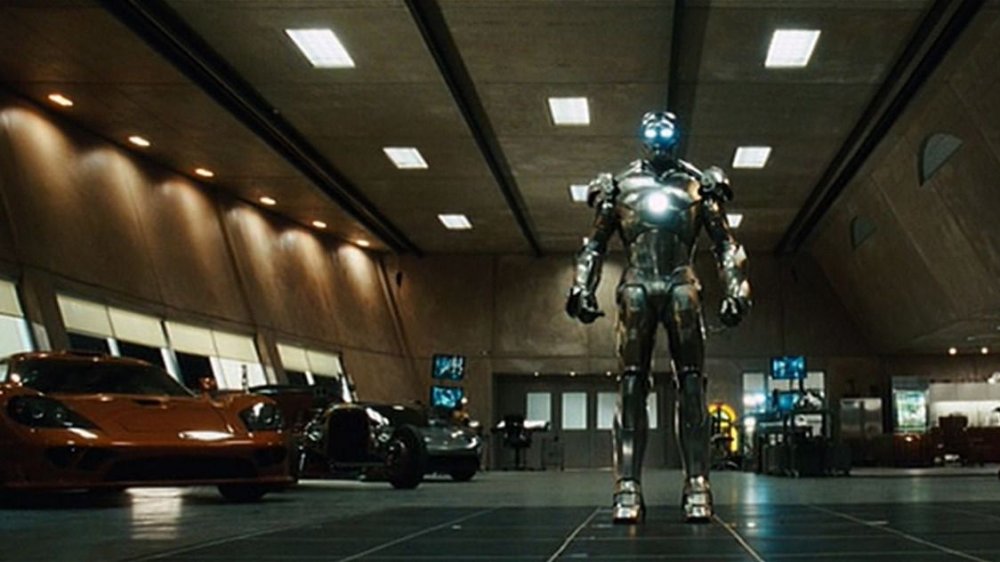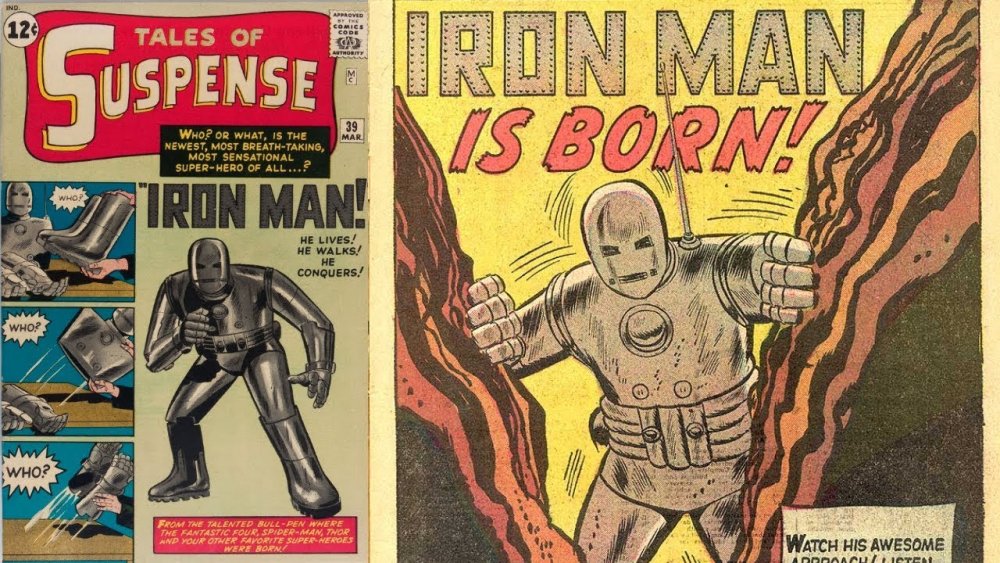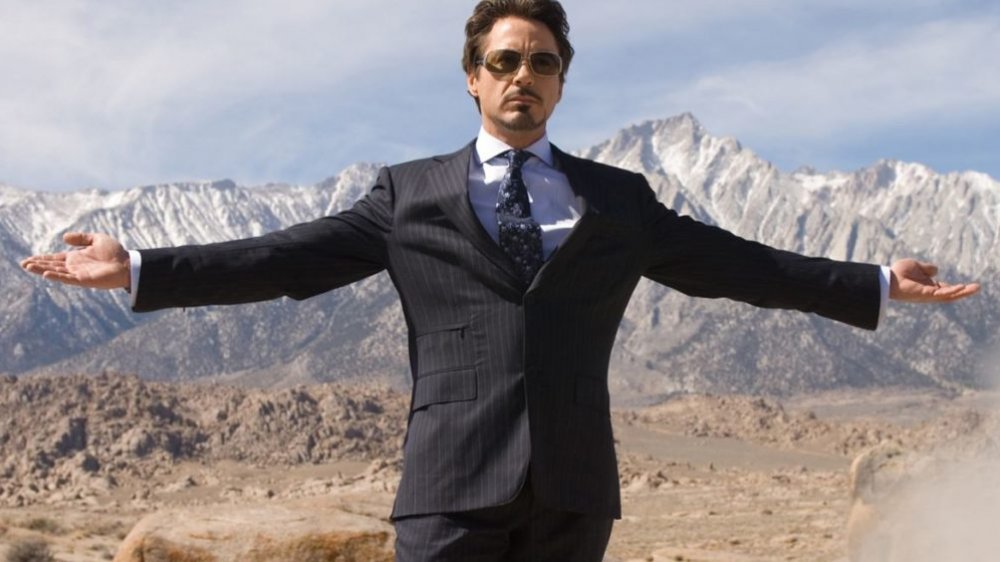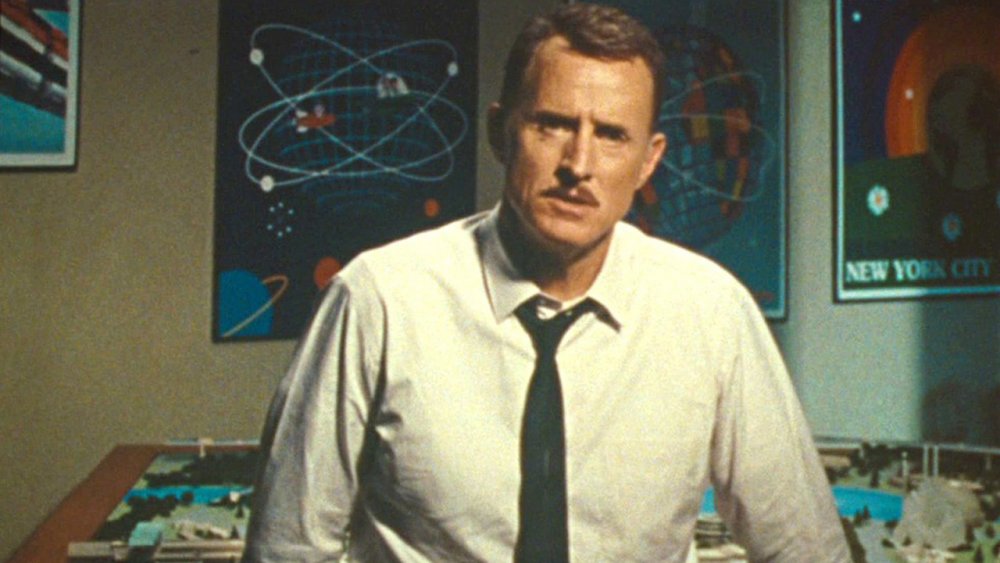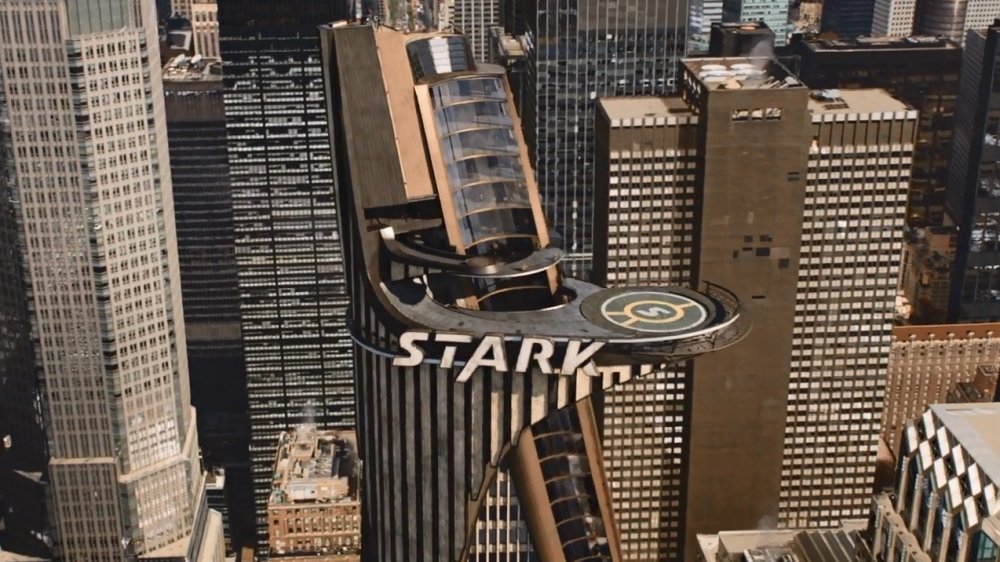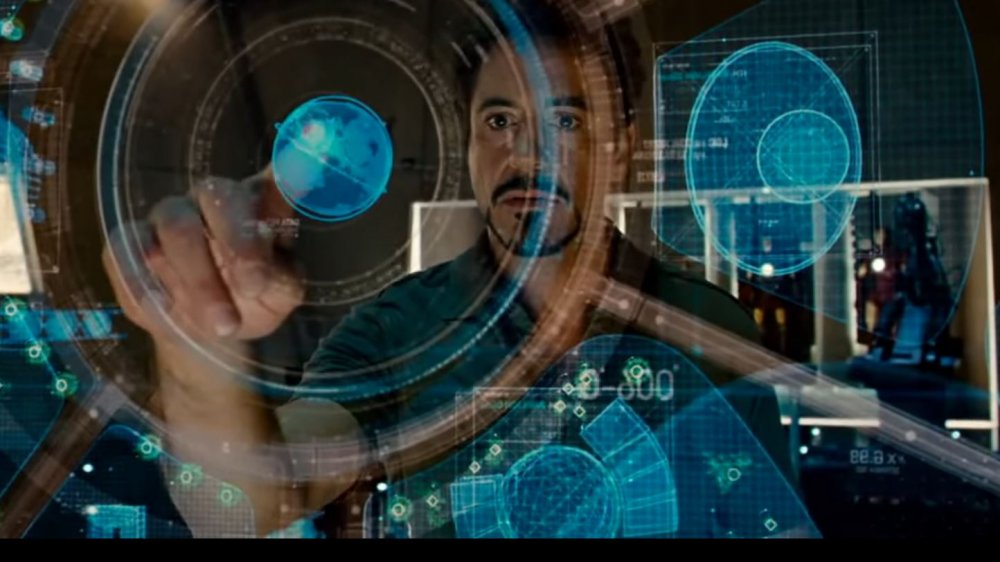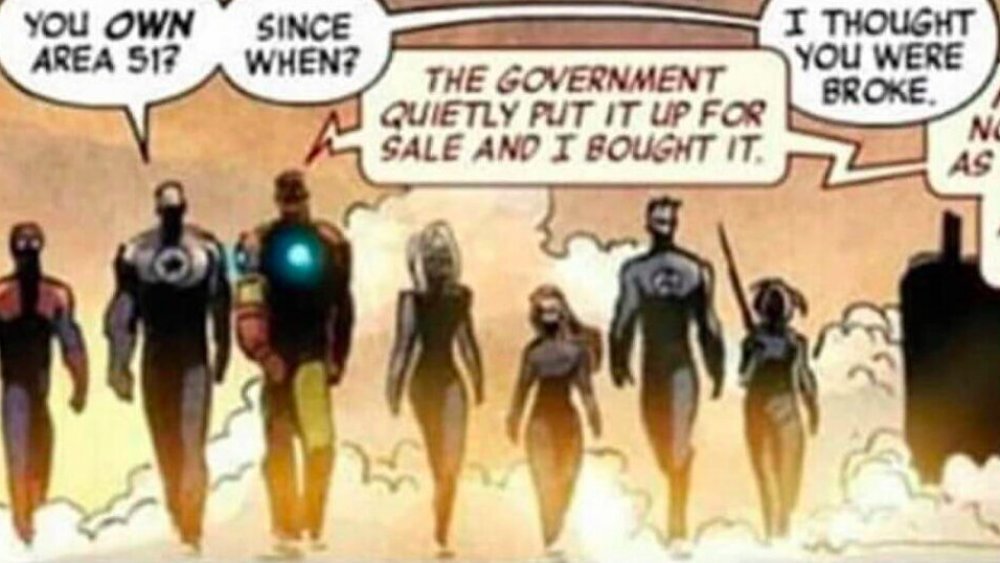False Things You Believe About Stark Industries
Tony Stark often draws comparisons to Batman. Both are eccentric billionaires without any special powers, instead electing to use their financial resources and technological genius to transcend their human limitations. Both find themselves reluctant, due to their lone-wolf personalities, to take up the mantle of heroism. And both, due to traumatic experiences and innate altruism, have a deep sense of duty.
One trait that appears to distinguish the two is the fact that Tony is relatively carefree, bordering on careless. Even after he gives up his playboy lifestyle, he retains his charisma and charm — or arrogance, depending on how you look at it. Bruce Wayne's silly rich boy pose is a carefully maintained act, while Tony Stark really does love the glamour of being loaded and famous. Most notably, Tony publicly claims his superhero alter ego: While Batman is a vigilante, Iron Man is a celebrity. Bruce Wayne would probably rather die than reveal his identity so easily.
Because of this, it's easy to assume that all the cards are on the table when it comes to Tony Stark's business. But there is more to Stark Industries and the backstory of Iron Man than meets even the electronically-augmented eye. We're here to point out the falsehoods you believe about Tony's company — and the actual truth.
Stark Industries is a closed system
Within the MCU, Stark Industries appears to operate within its own, self-sustained realm. The conglomerate seems to do just about everything by itself, for itself — or for people who will pay them a lot of money. Even that sort of relationship is rarely seen, however: Stark Industries is not in the business of being contracted by, say, McDonald's to engineer warp-speed deep-fryers. Like Tony, the company is a loner.
However, Stark Industries does enter into a contract with Acura to build a $9 million supercar for Tony. While the car itself is obviously completely fictional, the contract between the two is canon within the MCU. The specs are astounding and would be well worth the price if all of the modifications were technologically possible in the real world: The vehicle is completely one-of-a-kind. Instead of miles per gallon, mileage is measured in miles per Palladium Power Estimates. The car gets 302 PPE on the highway — whatever that means. And who buys a car without a self-detonating recon drone and thermal topography programs? Not Tony Stark, that's for sure. This is one link to the wider world Stark Industries is very happy to have.
Tony was born to run Stark Industries
Tony, a slightly egomaniacal, hyper-ambitious tech genius, is the perfect person to take over the company, right? Not necessarily. You might balk, but this belief is not ungrounded. Tony certainly inherited many of his traits from his father, Howard Stark, who ran the company before him. Not all of these are all that great, however, or conducive to business leadership.
A little arrogance isn't a bad thing in the world of tech, especially when you're playing in the big leagues. On the contrary, it might be one of the core necessities for survival. But swagger can quickly become a liability — something we see nearly come to pass in the Iron Man movies. Moreover, preparing to take over a business and shoulder a life-long obligation definitely robbed Tony of a normal childhood: He took over Stark Industries shortly after taking his first legal drink. There may never have been any choice for him as far as what he became, professionally and personally. Did the man create the expectations, or did the expectations create the man? Tony's father says to him, "I built this for you ... One day you'll figure this out. And when you do, you will change the world." No pressure! His father didn't just build the company: He built Tony. And that nearly made him a terrible choice to lead Stark Industries.
Stark Industries was primarily destructive before Tony changed things
As anyone who's seen Iron Man knows, Stark Industries was founded on an avid interest in selling the most unconquerable weapons to those who could pay the most. Its role in the market signifies the union between profit and war. When Tony experiences his own transformation, he changes this forever: His company's weapons are being distributed to terrorists, Stark Industries' place in the world is a destructive one, and he can't abide by it any longer. Thus, he immediately orders a cessation of all weapons manufacturing.
The notion of a tainted Stark legacy is partly true. Aside from selling weapons to terrorists, Howard Stark worked on the Manhattan Project, and was thus responsible for bringing the first nuclear weapons into existence. However, Stark Industries was also involved in Project Rebirth, which created Captain America. Sure, Rebirth was all about creating a living weapon, but you'd be hard-pressed to argue that Captain America isn't good for the world.
Really, most of Stark Industries' ventures really have been about protecting people. But in doing so, the company amassed the kind of power that other, less noble forces couldn't resist taking advantage of — and that the company couldn't resist profiting from. Howard Stark laments that Project Rebirth was the only good thing he'd ever done. But hey, the company also invented a flying car, so that's at least two good things.
Howard Stark didn't make mistakes
There might be a reason fans, and even Tony's father, are convinced that the legacy of Stark Industries is less than pristine: Howard Stark was actually framed for distributing weapons to enemies of the US. His playboy lifestyle and accompanying nonchalance takes some of the blame, admittedly. As chronicled in Agent Carter, when he came home from a holiday to Monaco, he discovered that various inventions, including a destructive formula, had been stolen. Someone had cut a hole into his mansion vault, but apparently this wasn't enough to convince the American public that he hadn't sold his inventions to the Soviets, who were discovered to be in possession of some of the stolen weapons. Howard decided to take it upon himself to retrieve his property overseas, as he realized he wouldn't be able to win over the public or the government. Unfortunately, his resulting absence at hearings earned him the label of fugitive.
Doggedly pursuing one's own solutions in this manner often leads to problems. But as Tony proves, this trait can be so much more than destructive.
Tony is a privileged jerk
Tony Stark wants everyone to think he's a smarmy jerk. Indeed, becoming this sort of person seems necessary to running his company: He must be oblivious to those on the rungs of the ladder below, focused only on what's ahead.
But don't count Tony out as some silver spoon brat just yet. Howard Stark, who founded the company, was very much the opposite sort of man: While he did step on people to get to the top, each of his steps was possible only because he had a very intimate understanding of life at the bottom. As detailed in Agent Carter, Howard grew up on the Lower East Side in an impoverished family — he knew how society limits success, and what it takes to transcend those boundaries. Thus, he used what he had to survive, and then perpetuated the things that had held him down. A vicious cycle ensued.
Tony didn't grow up taking the knocks his father did, but that experience rippled throughout his childhood regardless. But he breaks the cycle, proving he's not condemned by inheritance of money or hardship. Empathy grew within him, despite the circumstances of his life — and that's what makes him a hero.
No man is an island, except Tony
As much as he might like to think so, Tony isn't an island, and neither are most of his superhero buddies. If anything, he's a bridge: Stark Industries has ties all throughout the MCU. Intertwining backstories stretch decades back, making it clear that Stark Industries helped build the stories of other heroes, most prominently Captain America. The world's success would not have been possible without Stark Industries — and Stark Industries could not exist without the world.
Stark Industries introduced vibranium to the world beyond Wakanda, shaping the metal into Captain America's shield. Stark Industries also worked directly on the project that created Captain America himself. This connection brought a staggering force for good into being that would go on to change the world. They were also most certainly paid for Project Rebirth, which gave Stark Industries some of the capital necessary to expand, and eventually supply the resources Tony would need to become Iron Man.
This history grew even more complex with time. Howard Stark eventually co-founded S.H.I.E.L.D. and spent years studying the Tesseract, without knowing its true nature. Years later, Howard and Maria, his wife, were assassinated by the Winter Soldier, who was created using Project Rebirth tech. Stark Industries has woven a tightly tangled web indeed.
Tony Stark drives an Audi R8 V10 Plus Quattro
Reputation is important to a company head like Tony, and his signature car, an Audi R8, is part of that. But despite the fact that automotive enthusiasts might think of the vehicle as his ride, that car isn't actually his. The 2017 Audi R8 V10 Plus Quattro, known best as "Tony Stark's car," isn't actually in any Iron Man or Avengers films. Tony has at least three different R8s over the course of the MCU films, so the confusion makes sense: It is definitely the car he prefers. But he never actually gets behind the wheel of the 2017 model.
What does he drive, then? Tony first rolls onto the screen in the 2008 model. Tony's next R8, the Spyder, appears in 2010's Iron Man 2, followed by Iron Man 3's R8 E-Tron in 2013. In The Avengers, Tony switches to his ($9 million) Acura NSX, but quickly reverses to a new R8 in Avengers: Age of Ultron as well as in Captain America: Civil War, and finally an Audi E-Tron GT in Avengers: Endgame.
So what happened with the R8 V10 Plus? Well, headlines around the world hyped the car up as Tony Stark's own ride. The rest is high-octane history.
Stark Industries' first appearance
Stark Industries' first comics appearance came in 1963's Tales of Suspense #39, but the company name wasn't revealed until Tales of Suspense #45. You might expect a more striking introduction for such an iconic company, rather than not being named at all. But even without a name, it's easy to recognize the signature Stark personality of the company, since Tony shows off a new invention to US defense officials and flaunts his resources in front of the ladies.
Interestingly enough, the conglomerate's complicated legacy is inadvertently revealed in #43, still a good couple issues before it is named. One of the wind tunnels in a Stark test facility goes rogue, creating hurricane force winds that slam a test missile into the side of a hill. Tony's life as a man and superhero is fraught with conflicts between progress and its cost: The legacy of destruction and rebirth begins here.
Stark industries must be the largest enterprise in the superhero world
From the company's flashy presence alone, it's easy to imagine that Stark Industries' global reach constitutes the most expansive and profitable tech monopoly in all of superhero-dom. Within the confines of the MCU, this is probably true. But Bruce Wayne, Tony's doppelganger from the DC universe, actually bests him in this area.
According to Forbes, Wayne Enterprises makes more money than Stark Industries: The former beats out the latter by $31.3 billion to $20.3 billion in 2007 dollars. With Iron Man often painted as Marvel's Batman, this is a blow to the MCU. Of course, we don't know if illegal weapons sales to terrorists were factored into Stark Industries' revenues in this calculation. It'd be interesting to recalculate in a decade or so, as cutting-edge tech companies are becoming increasingly relevant to the demands of the modern age. Can Bruce Wayne keep up? Only time will tell.
Stark Industries was founded in the 1940s by Howard Stark
Think Stark Industries was forged in the fires of the '40s? Think again. According to the comics, Stark Industries was established in the mid-1800s by Isaac Stark, Sr. This early iteration of the company was revolutionary for its time, and an important part of the coming industrial age. However, for all intents and purposes, Stark Industries as we know it really did take off in the 1940s.
The company, across all timelines, has actually had a much longer and more convoluted history than its mammoth presence in the modern age would suggest. Stark Industries has been known by nearly half a dozen names over the years, including an era in which Obadiah Stane usurped the company and renamed it Stane International. This happened in the comics, in which Stane is a business rival of Stark Industries, not a part of the company who turns sour, as in the films. Stark Industries also has tons of subsidiary companies, including a cola company that produces Okle-Cola. Diversification is key to success, after all.
The Stark Industries logo is as revolutionary as the company
Even the design of Stark Industries' logo is cutting-edge and forward-thinking, just waiting to be slapped on the side of a skyscraper. But in fact, it's a combination of two other companies' logos, both of which serve as inspiration for the company's exploits.
The angular star swoosh is lifted from Lockheed Martin, an American defense company with deep ties to the military. The Stark Industries font is a direct nod to Northrop Grumman, also one of the top defense companies in the world. Tony himself is based off Howard Hughes, one of the most famous engineers and industrialists of the 20th century, whose accomplishments contributed to building the world in which Lockheed Martin and Northrop Grumman thrive. Stark Industries is as innovative as its real-world counterparts, but also as infamous. So it goes in the business of war — until Tony calls it quits.
JARVIS is just a name
JARVIS, Tony Stark's AI assistant, is really a tribute to Howard Stark's butler, Edwin Jarvis. It's a prim-sounding name that elicits images of a sophisticated, dependable companion — you'd be forgiven for assuming Tony picked it because it's funny. But Edwin Jarvis was more than a butler: He was a confidante and ally to Tony's father, even helping Peggy Carter clear his name and going on to work with her in future conflicts. He went on to become a father figure to Tony as well. Basically, Jarvis is an unsung superhero who held the Starks' lives together against all odds. In honor of this man, Tony throws an acronym together that spells out JARVIS: Just A Rather Very Intelligent System.
In the comics, however, Edwin Jarvis is actually Tony's real human butler. It has been theorized that he was transformed into an AI for the movies, to avoid comparisons to Alfred Pennyworth, Bruce Wayne's butler. You win this one, DC.
Government entanglements extend mainly to weapon sales
Though Stark Industries is deeply involved with the government, the relationship really does seem to consist entirely of weapon sales. It's easy to assume, then, that the line between the company's private industrial work and its work for the government is clear. Things get weird when you find out that, according to the comics, Tony owns Area 51. Why does he own the most notoriously clandestine area of the US? To hide one of the Infinity Gems, of course. We can all understand that — but there's another wrinkle. Owning Area 51 is related to Tony's involvement with the Illuminati, who are totally real within the world of Marvel Comics.
Fans, including this Redditor, have pointed out that in Iron Man 2, Tony has a folder called "Illuminati" on his phone. If we're going by the comics, this isn't actually a reference to the broad, faceless force that conspiracy theorists believe orchestrates our entire society behind the scenes. Marvel's Illuminati is a secret society, but it's a recent one, brought together by Tony, who wants to prevent interstellar war. Still — it's clear his ties to the government go beyond missiles. What else is he hiding? Only time will tell.
